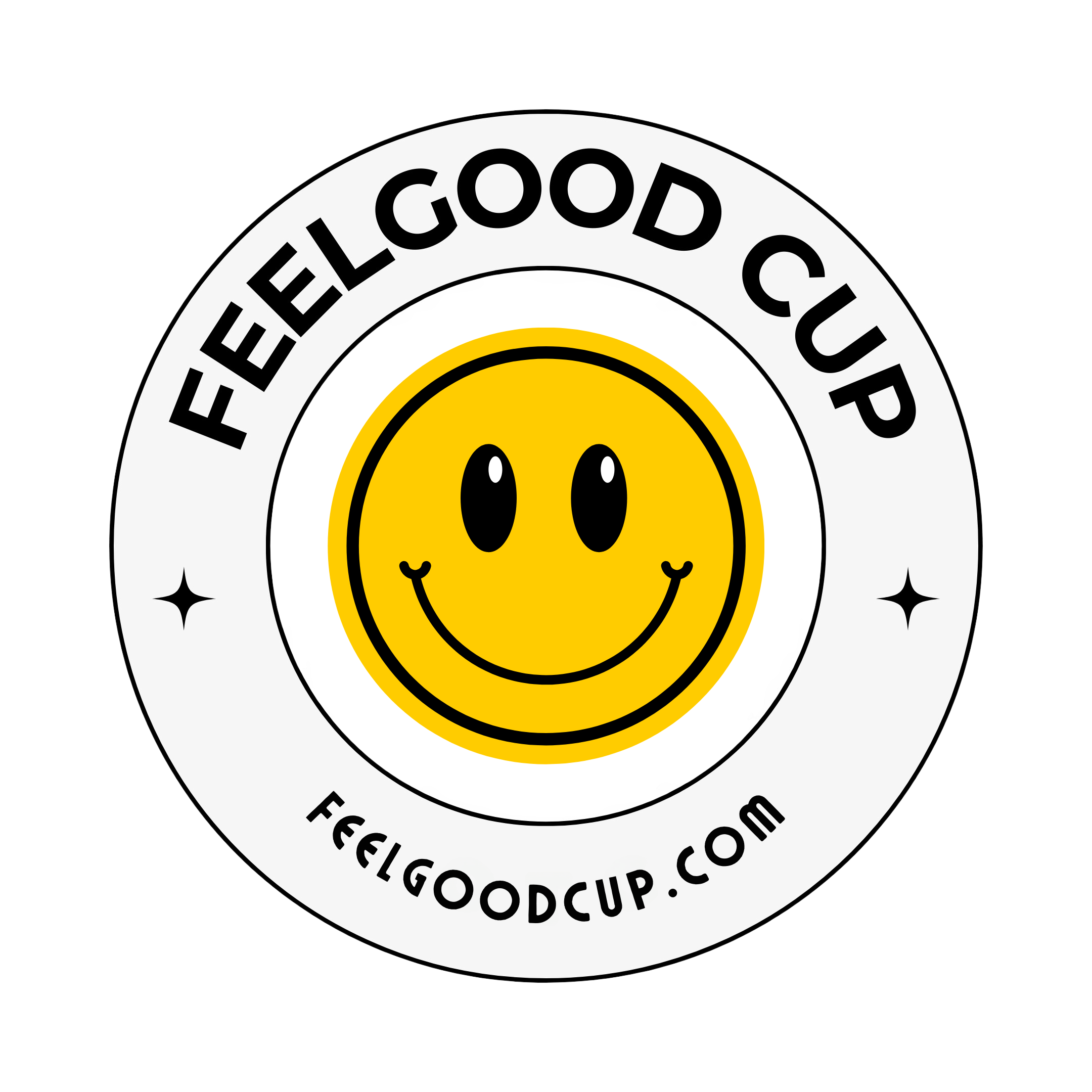Are we just a pretty face?
Why Choose Our FeelGood Cups?

FeelGood Cup's mission
We want to create a reusable cup is so good that you don't even want to pick up those ugly single-use again! Switching reusable is a chore?
Pah! Who says saving the planet isn't a blast? We think it's so much fun, you'll be itching to grab your FeelGood cup. It'll become an extension of you, a daily ritual that complements your style like a superhero cape (minus the cape).
Here's the beauty: our FeelGood cups are a blank canvas for your creativity. Want a floral explosion? Go for Ces Daisy! Feeling a touch of rock and roll? Tokyo Drift! Plus, these bad boys are reliable as a best friend – perfect for conquering your day on the go, or holding down the fort as your own personal office mug. Think of it as a super-powered security blanket – keeps you warm, fuzzy, and totally chill (and hydrated, of course).
Cleaning? Easier than counting to 5... unless you've been sipping on paint. Then, maybe give it a few extra seconds.
the problem
Single-use plastic bottles and coffee cups are creating a major waste problem. Millions are used every day, and because they can't be easily recycled, they end up in landfills or pollute our environment. Even disposable coffee cups, which appear to be paper, often have a plastic lining that makes them difficult to recycle. This plastic contamination can ruin entire batches of recyclables.
Australia faces a massive issue with single-use plastic bottles and coffee cups, generating a staggering amount of waste that threatens our environment and future generations.
Coffee cup catastrophe: Every year, we dispose of a mind-blowing 1.8 billion single-use coffee cups [Clean Up Australia]. These seemingly harmless cups are lined with a thin layer of plastic, rendering them unrecyclable through most curbside programs. A whopping 90% of these cups end up in landfills, accumulating plastic waste at a rate of 60,000 kilograms annually [Clean Up Australia].
Plastic bottle predicament: Plastic bottles are another major culprit. The sheer volume is concerning - we use billions of plastic bottles each year, with a significant portion ending up as waste. These plastic bottles take hundreds of years to decompose, littering our landscapes, waterways, and even the ocean. Marine animals often mistake plastic debris for food, leading to entanglement and death.
Environmental and economic consequences: The environmental cost of this plastic and coffee cup waste is severe. Landfills are overflowing, and plastic pollution is harming our precious ecosystems. Marine life ingests plastic, disrupting their digestive systems and sometimes leading to death. Birds get tangled in plastic debris, and entire ecosystems are affected by this plastic influx. The economic consequences are also significant. Cleaning up plastic pollution costs taxpayers millions of dollars annually.
Impact on future generations: This plastic and coffee cup waste isn't just an eyesore; it's a ticking time bomb for future generations. Landfills are reaching capacity, and plastic pollution is expected to worsen if left unchecked. The microplastics created from degrading plastic bottles and cups are finding their way into our food chain, posing a potential health risk to humans. By not addressing this issue now, we're leaving a legacy of environmental damage and potential health problems for our children and grandchildren.
our hearts are in the right place, but...
Many Aussies understand the environmental crisis caused by single-use plastics and coffee cups. We want to make sustainable choices, but the reality is, convenient and affordable alternatives aren't always readily available. While reusable options exist, single-use plastics are often cheaper, quicker to grab on-the-go, and may have a wider presence in stores and cafes. This lack of readily available, user-friendly sustainable alternatives can make it difficult to translate our good intentions into everyday actions.
Cost Comparison: While reusable options can save money in the long run, the initial purchase price can be higher than a pack of disposable cups or plastic bottles. This upfront cost can be a deterrent, especially for budget-conscious consumers. Additionally, some reusable options may require specific cleaning methods or replacements for parts that wear out, adding to the overall expense.
Lack of Accessibility: Finding high-quality, user-friendly reusable alternatives can be a challenge, particularly outside major cities. Supermarkets and cafes often prioritise single-use options due to their lower cost and established supply chains. This limited availability makes it difficult for consumers who are genuinely interested in switching to reusables.
Behavioural Change: Shifting ingrained habits takes time and effort. We're accustomed to the convenience of single-use items, and breaking that cycle requires conscious effort. Forgetting your reusable cup at home or not being in the habit of carrying one can lead to grabbing a disposable option out of convenience, derailing your best intentions.
Because who doesn't want to see penguins happy walk home?
It’s our home, too.


